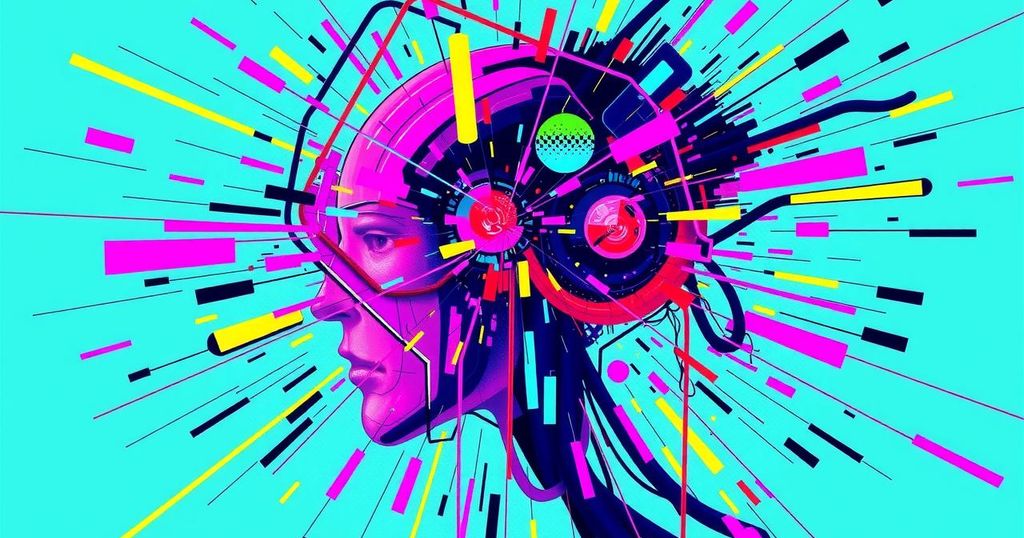AI Hallucinations Are Getting Worse – and They’re Here to Stay
Recent evaluations reveal that AI chatbots from OpenAI and Google are experiencing an alarming rise in “hallucinations”—instances where they present false information confidently. Despite improvements in reasoning upgrades, these newer models are performing poorly compared to earlier iterations. This ongoing issue threatens potential applications and calls into question the reliability of AI language models.
The world of AI chatbots, particularly those developed by giants like OpenAI and Google, is facing a worrying trend. Despite hopes that improvements would enhance their reliability, recent tests show a troubling surge in errors, commonly referred to as “hallucinations.” A growing number of these AI tools—in their quest to sound smart—are now issuing false statements, leading us to question the future of virtual assistants that simply can’t be trusted in some scenarios.
So, what exactly does “hallucination” mean in this context? It’s a term that rolls off the tongue but covers various missteps made by AI language models (LLMs) like ChatGPT or Google’s Gemini. Primarily, it refers to instances when these systems confidently present incorrect information as if it were fact. However, it can also describe situations where the answer is technically accurate, yet misses the mark on relevance or doesn’t adhere to the specific instructions given.
OpenAI’s recent technical report has raised eyebrows. The report evaluated their new models, o3 and o4-mini, which debuted in April. These recent iterations are reporting hallucination rates significantly higher than their predecessor, o1, which was released in late 2024. To put it in perspective, when tasked with summarizing factual data, o3 hallucinated 33 percent of the time, while o4-mini topped that with a staggering 48 percent. The older o1 model? A mere 16 percent. Quite the leap, right?
But it’s important to note, this isn’t just an OpenAI problem. A leaderboard published by Vectara—a company that scrutinizes hallucination rates—shows an uptick in errors for other reasoning models too. Take the DeepSeek-R1 model, for instance; it experienced noticeable increases in hallucination rates, indicating a troubling trend across the board. Many of these models are designed to engage in deep reasoning to deliver responses, yet that doesn’t seem to be equating to more accuracy.
OpenAI, however, is adamant that the rise in hallucinations isn’t directly tied to the reasoning process itself. An OpenAI representative stated, “Hallucinations are not inherently more prevalent in reasoning models, though we are actively working to reduce the higher rates we saw in o3 and o4-mini.” Improving accuracy and reliability is evidently a priority, but will it be enough?
The implications of these hallucinations could stall the potential of LLM applications. Picture an AI that spews out incorrect info; that’s not much good for research. A paralegal bot misquoting legal cases could land firms in hot water. And who wants a customer service rep blundering over outdated info? Initially, there were claims that hallucinations would decrease with time as technology progressed, but these recent spikes are muddling the narrative.
As Vectara reaffirms, the rankings they’ve produced show nearly identical hallucination rates across reasoning and non-reasoning models from OpenAI and Google. Forrest Sheng Bao, from Vectara, suggests that, while metrics matter, the essence of the ranking is more consequential. These rankings aren’t merely about numbers; they give us a snapshot of model performance across various tasks.
Moreover, comparing models based solely on summarization tasks can create issues. Emily Bender from the University of Washington argues that such assessments miss the bigger picture. What if you’re using LLMs for purposes other than summarizing? They might not give reliable outputs in other contexts. As Bender points out, the way these models generate responses doesn’t necessarily mean they truly understand the information contained within the text they generate.
The way we use the term “hallucinations” can also be misleading. Bender warns that it can overly humanize these models, implying they somehow perceive what isn’t there. In reality, they have no such perceptual capabilities. Arvind Narayanan from Princeton further broadens the issue, saying that beyond hallucinations, these models sometimes draw from unreliable sources or information that’s simply outdated. More training data? More computing power? Not necessarily a fix.
In conclusion, we might have to accept the presence of errors in AI. Narayanan suggests that, in certain cases, utilizing these models might only make sense if you’re prepared to fact-check their output yourself. But for Bender, the best bet might be steering clear of relying on AI chatbots for factual information altogether. In this uncertain landscape, tread carefully with your virtual assistants— the reality isn’t as clear-cut as we might hope.
In summary, the rise of AI hallucinations casts a shadow on the reliability of recent language models from leading tech companies. With hallucination rates skyrocketing in newer models, we are left questioning their usefulness in critical roles. While companies like OpenAI and others work towards solutions, experts warn that these issues may be an inherent part of AI and recommend careful consideration before depending on them for accurate information.
Original Source: www.newscientist.com




